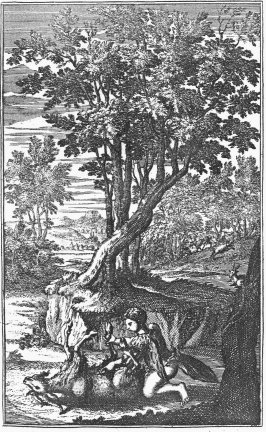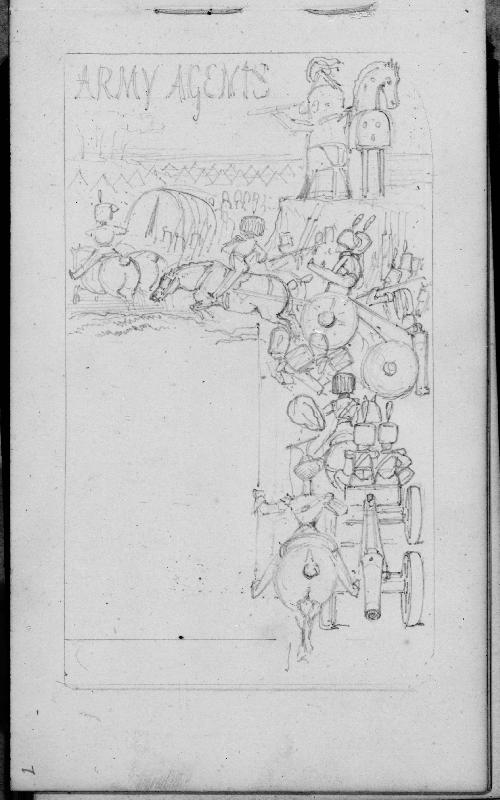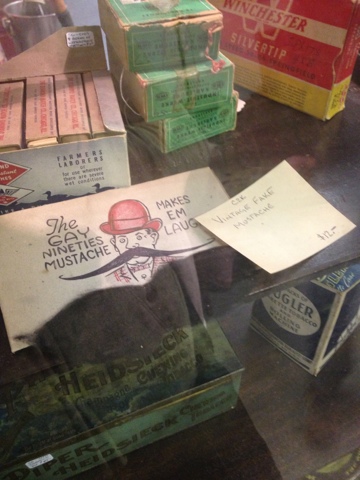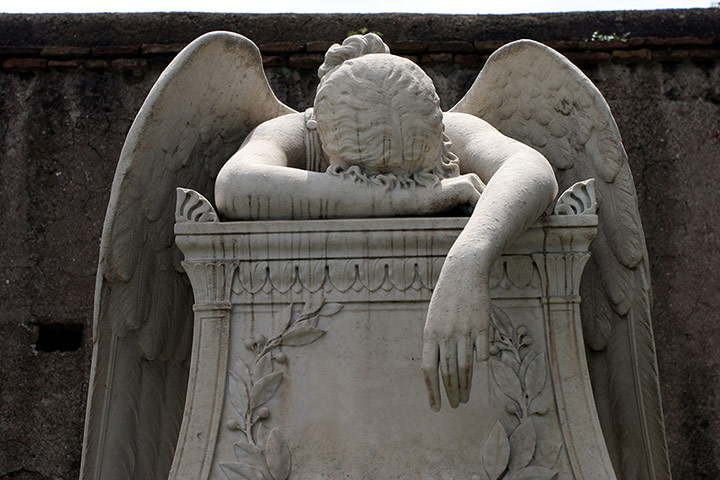"These days, the newer the baby, the more likely we are to carry it. (For good reason.) But the ancient Greek physician Soranus thought that babies, especially boys, should not be carrieduntil four months of age. Carrying posed the risk of severe testicular injury, Soranus thought. Today we worry about raising children who aren’t well-adjusted; the Greeks worried about raising children who weren’t eunuchs. This bias against carrying held through medieval times, apparently."
from Slate
Friday, March 29, 2013
Sunday, March 24, 2013
Hayy ibn Yaqzan and Knowing Through Dissection
The story, written by Abu Bakr ibn 'Abd al-Malik ibn Tufayl, begins with Hayy ibn Yaqzan. He was abandoned on an island and was essentially raised by a doe. He had to learn about the world through observation. When his doe-mother died, he sought to find out how to make her live again. It did not work, but he learned about the body:
§ 16
§ 17
§ 18
§ 19
§ 20
However, he sharpened them again and renewed his attempt with all the skill he was master of. At last he broke through, and the first part he met with was the lungs, which he at first sight mistook for that which he searched for, and turned them about this way and that way to see if he could find in them the seat of the disease. He first happened upon that lobe which lay next the side which he had opened and when he perceived that it did lean sideways, he was satisfied that it was not the organ he looked for, because he was fully persuaded that that must needs be in the midst of the body, as well in regard of latitude as longitude. He proceeded in his search, till at last he found the heart, which when he saw closed with a very strong cover, and fastened with stout ligaments, and covered by the lungs on that side which he had opened, he began to say to himself: "If this organ be so on the other side as it is on this which I have opened, then it is certainly in the midst, and without doubt the same I look for; especially considering the convenience of the situation, the comeliness and regularity of its figure, the firmness of the flesh, and besides, its being guarded with such a membrane as I have not observed in any other part." Upon this he searches the other side, and finding the same membrane on the inside of the ribs, and the lungs in the same posture which he had observed on that side which he had opened first, he concluded this organ to be the part which he looked for.
§ 21
§ 22
Image and Translation from ERBzine
Information mentioned here and other translated text can also be found in Robert Irwin, Night Horses and the Desert: An Anthology of Classical Arabic Literature (The Penguin Press): 290-298.Wednesday, March 20, 2013
Tuesday, March 19, 2013
Art of Danny Quirk
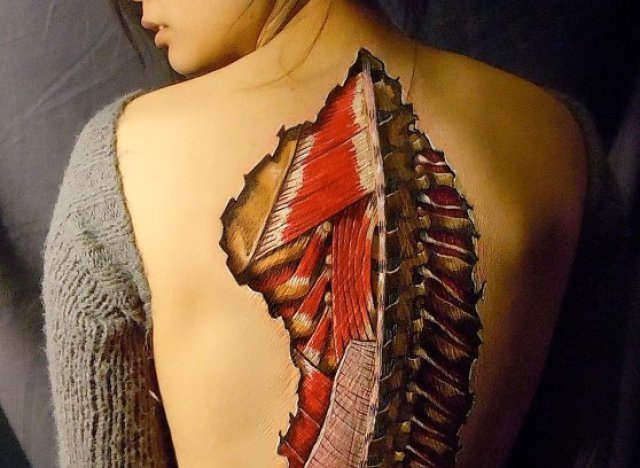
From The Huffington Post
And similar to the "flayed angel" of Jacques Fabien Gautier d'Agoty:
From Historical Anatomies on the Web
Monday, March 18, 2013
Sunday, March 17, 2013
St. Patty's Day Story on Collecting
"History Evergreen" tells the story of a man fascinated by Irish history and collecting.
1916 Easter Proclamation declaring Ireland an independent state.
Saturday, March 16, 2013
"[A] new figure of Anatomy, which represents a woman chained down upon a table, suppos'd opened alive; wherein the circulation of the blood is made visible through glass veins and arteries: the circulation is also seen from the mother to the child, and from the child to the mother, with the Histolick and Diastolick motion of the hears and action of the lungs. All which particulars, with several others, will be shewn and clearly explained by [the surgeon] Mr. Chovet himself. Note, a Gentlewoman qualified will attend the ladies."
--From the London Evening Post, 27 December 1733, quoted in George C. Peachey, A Memoir of William and John Hunter (William Brendan, 1924), p. 30 and requoted in Lyle Massey, "“On Waxes and Wombs: Eighteenth-Century Representations of the Gravid Uterus,” in Ephemeral Bodies: Wax Sculpture and the Human Figure, ed., Roberta Panzanella (Los Angeles: Getty Publications, 2008), p. 98.
--From the London Evening Post, 27 December 1733, quoted in George C. Peachey, A Memoir of William and John Hunter (William Brendan, 1924), p. 30 and requoted in Lyle Massey, "“On Waxes and Wombs: Eighteenth-Century Representations of the Gravid Uterus,” in Ephemeral Bodies: Wax Sculpture and the Human Figure, ed., Roberta Panzanella (Los Angeles: Getty Publications, 2008), p. 98.
Thursday, March 14, 2013
Wednesday, March 13, 2013
Sunday, March 10, 2013
Saturday, March 9, 2013

"In 1592, a British ship sank near the island of Alderney in the English Channel carrying an odd piece of cargo: a small, angular crystal....Once it was brought back to land, a few European scientists began to suspect the mysterious object might be a calcite crystal, which they believe Vikings and other European seafarers used to navigate before the introduction of the magnetic compass."
For more, see ScienceShot
Friday, March 8, 2013
On the Valkyrie: With a Looney Tunes Review
So, there's some news on an actual depiction of a valkyrie at the British Museum
But most of us don't know much about valkyries beyond Wagner's Flight of the Valkyries and, of course, it's famous Elmer Fudd cover (and perhaps that mention on 30 Rock)
{Bugs Bunny is possibly the best drag queen ever.}
BUT "The legends of the valkyries – the ominous companions of the god Odin who descend on battlefields to choose which warriors will die – have been among the most enduring in Scandinavian folklore and literature. Later images, often inspired by Wagner's music, tend to be romantic creatures with flowing locks and voluptuous bodies."
And from Wikipedia: "In Norse mythology, a valkyrie (from Old Norse valkyrja "chooser of the slain") is one of a host of female figures who decide which soldiers die in battle and which live. Selecting among half of those who die in battle (the other half go to the goddess Freyja's afterlife field Fólkvangr), the valkyries bring their chosen to the afterlife hall of the slain, Valhalla, ruled over by the god Odin. There, the deceased warriors become einherjar. When the einherjar are not preparing for the events of Ragnarök, the valkyries bear them mead. Valkyries also appear as lovers of heroes and other mortals, where they are sometimes described as the daughters of royalty, sometimes accompanied by ravens, and sometimes connected to swans or horses."
But most of us don't know much about valkyries beyond Wagner's Flight of the Valkyries and, of course, it's famous Elmer Fudd cover (and perhaps that mention on 30 Rock)
{Bugs Bunny is possibly the best drag queen ever.}
BUT "The legends of the valkyries – the ominous companions of the god Odin who descend on battlefields to choose which warriors will die – have been among the most enduring in Scandinavian folklore and literature. Later images, often inspired by Wagner's music, tend to be romantic creatures with flowing locks and voluptuous bodies."
And from Wikipedia: "In Norse mythology, a valkyrie (from Old Norse valkyrja "chooser of the slain") is one of a host of female figures who decide which soldiers die in battle and which live. Selecting among half of those who die in battle (the other half go to the goddess Freyja's afterlife field Fólkvangr), the valkyries bring their chosen to the afterlife hall of the slain, Valhalla, ruled over by the god Odin. There, the deceased warriors become einherjar. When the einherjar are not preparing for the events of Ragnarök, the valkyries bear them mead. Valkyries also appear as lovers of heroes and other mortals, where they are sometimes described as the daughters of royalty, sometimes accompanied by ravens, and sometimes connected to swans or horses."
Wednesday, March 6, 2013
Jonathan Swift's A Modest Proposal
One of my favorite readings from Brit Lit was this wonderful satire by Swift, who proposes that we control the poor population by eating children.
Some quotes:
”I have been assured by a very knowing American of my acquaintance in London, that a young healthy child well nursed is at a year old a most delicious, nourishing, and wholesome food, whether stewed, roasted, baked, or boiled ...”
"Those who are more thrifty (as I must confess the times require) may flay the carcass; the skin of which artificially dressed will make admirable gloves for ladies, and summer boots for fine gentlemen."
"As to our city of Dublin, shambles may be appointed for this purpose in the most convenient parts of it, and butchers we may be assured will not be wanting; although I rather recommend buying the children alive, and dressing them hot from the knife, as we do roasting pigs."
For the full text, go HERE
And for a modern version:
Thanks to MS!
Some quotes:
”I have been assured by a very knowing American of my acquaintance in London, that a young healthy child well nursed is at a year old a most delicious, nourishing, and wholesome food, whether stewed, roasted, baked, or boiled ...”
"Those who are more thrifty (as I must confess the times require) may flay the carcass; the skin of which artificially dressed will make admirable gloves for ladies, and summer boots for fine gentlemen."
"As to our city of Dublin, shambles may be appointed for this purpose in the most convenient parts of it, and butchers we may be assured will not be wanting; although I rather recommend buying the children alive, and dressing them hot from the knife, as we do roasting pigs."
For the full text, go HERE
And for a modern version:
"Describing my doctoral work can evoke the odd blush or chuckle. Such reactions are perhaps implicit to my research topic: genitalia in the 18th century."
For full article, see HERE
And for a song about genitals, below:
For full article, see HERE
And for a song about genitals, below:
"When Pregnancy Tests Were Toads"
"As a young woman in the 1950s, Audrey Peattie injected urine into toads every day....Audrey’s job involved processing urine specimens for use in the Xenopus test, also called the ‘Hogben test’ in honour of one of its inventors, the British physiologist Lancelot Hogben. A hormone found in the urine of pregnant women – today known as human chorionic gonadotropin (hCG) – can induce the female Xenopus toad to lay hundreds of eggs. The Hogben test involved injecting a toad with urine and seeing whether it laid eggs (a positive reaction)."
From Wellcome History
From Wellcome History
Monday, March 4, 2013
Joel-Peter Witkin v. NIN reprise
While I'm posting about NIN, here's the music video for Closer based loosely on the photographs of Joel-Peter Witkin:
Famous Graves
From The Guardian
The curse of grave-robbers dates all the way from the pyramids to the “resurrectionists” who in the early 19th century would supply colleges training future surgeons with bodies for students to practise on by disturbing the recent dead. So much so that some cemeteries built watchtowers or offered “mortsafes”, lockable iron cages to place over graves (still to be seen in situ in some Scottish kirkyards). Others opted for a warning on the tombstone, as may be the case with Shakespeare’s grave, inside Holy Trinity Church Stratford-upon-Avon. His dates (1564-1616) are followed by a verse that ends: “Bleste be the man that spares thes stones, And curst be he who moves my bones.”
Sunday, March 3, 2013
Saturday, March 2, 2013
Ivory
From the New York Times:
Chinese investors have anointed it “white gold.” Carvers and collectors prefer the term “organic gemstone.” Smugglers, however, use a gruesomely straightforward name for the recently harvested African elephant tusks that find their way to this remote trading outpost on the Vietnamese border.“We call them bloody teeth,” said Xing, a furniture maker and ivory trafficker who is part of a shadowy trade that has revived calls for a total international ban on ivory sales.
Ivory is etched deeply into the Chinese identity. Popular lore tells of emperors who believed ivory chopsticks would change color upon contact with poisoned food. In Chinese medicine, ivory powder is said to purge toxins from the body and give a luminous complexion. As part of its public relations effort to legitimize the trade, the government in 2006 added ivory carving to its official Intangible Cultural Heritage register, along with traditional opera, kung fu and acupuncture."
Chinese investors have anointed it “white gold.” Carvers and collectors prefer the term “organic gemstone.” Smugglers, however, use a gruesomely straightforward name for the recently harvested African elephant tusks that find their way to this remote trading outpost on the Vietnamese border.“We call them bloody teeth,” said Xing, a furniture maker and ivory trafficker who is part of a shadowy trade that has revived calls for a total international ban on ivory sales.
Ivory is etched deeply into the Chinese identity. Popular lore tells of emperors who believed ivory chopsticks would change color upon contact with poisoned food. In Chinese medicine, ivory powder is said to purge toxins from the body and give a luminous complexion. As part of its public relations effort to legitimize the trade, the government in 2006 added ivory carving to its official Intangible Cultural Heritage register, along with traditional opera, kung fu and acupuncture."


